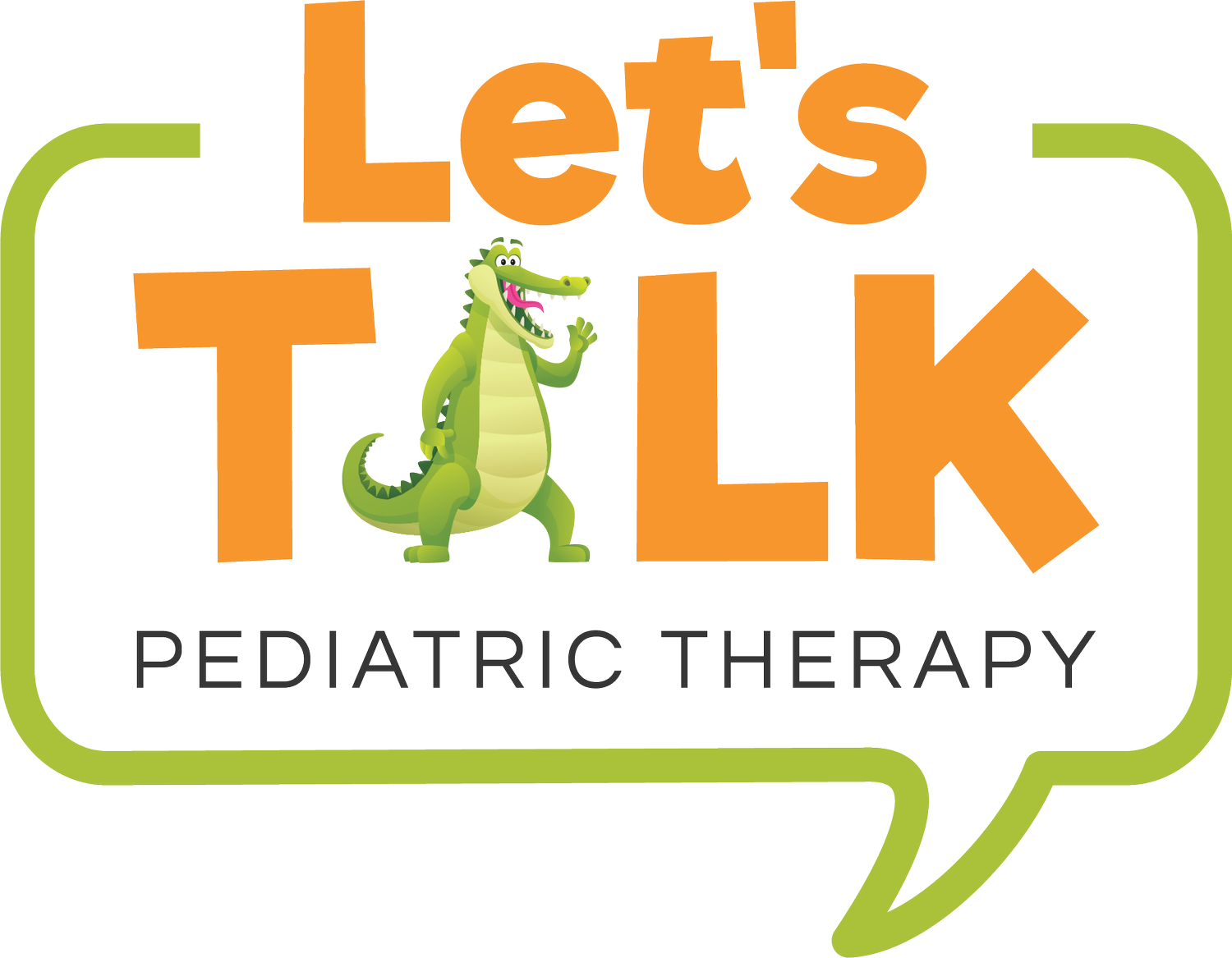4 Early Language Strategies
I get asked all the time,
What can I do at home to help my child communicate?
Parents feel overjoyed and hopeful when they find a provider they trust that provides speech therapy for kids near them but often feel overwhelmed when they get home and are unsure how to continue to support their child. Let’s break down a few strategies used in speech therapy for kids at Let’s TALK Pediatric Therapy that can be incorporated into your daily routines.
1.Offering Choices- It can be that simple and used in your daily routines (e.g., meal time). A large part of speech therapy for kids is offering choices. Asking your child if he/she wants a single item allows them to respond with yes/no or not respond at all, whereas giving choices (e.g., Do you want carrots or oranges?) encourages your child to communicate with you in order to get what they want/need.
Helpful tips when giving choices:
Provide visuals & distance the items so it is clear to the child they are two separate options.
Honor, model, and reinforce! Your child may point, gesture, gaze, or use sounds/single words to indicate the desired item they want. It is important to honor their method of communication while modeling the verbal language and reinforcing the choice they made (i.e., “You want oranges! Here are the oranges”).
2. Use Communication Temptations- A communication temptation is giving your child a reason/opportunity to communicate, specifically for something that is motivating or rewarding. There are numerous ways to create temptations within your home that promote different functions or reasons for your child to communicate (e.g., request an object, ask for help, terminate).
Ways to create communication temptations:
Keep toys out of reach. When a child cannot access a toy on their own, it creates a natural opportunity for them to request assistance or an item.
Give Less. During meal time don’t place all their food on their plate at once. Provide a few bites at a time and allow your child to request a food item or request more.
Sabotage an activity. Purposefully give your child an item in a container they cannot open, give them a cup with no water in it, or set up the bath with no bubbles. In these scenarios, your child may recognize something is missing and tempt them to communicate/ask!
3. Repeat and Expand- Repetition is okay and actually often beneficial and encouraged for children learning language. The more exposure your child has to vocabulary during meaningful activities, the more likely they will understand the meaning of the word and add it to their vocabulary. Let’s use a common object like a “ball”. You may repeat the word “ball” frequently while engaging in a meaningful activity together. “I got the ball. The ball is big and blue. Ready, set, go ball! Let’s bounce the ball. The ball went high!”.
Then you may notice your child begin to engage and use the vocabulary word “ball”. The key is to *expand* on the single word your child verbalizes. If your child catches the ball and labels it “ball”. You can expand on his/her phrase by adding one to two words “big blue ball”. Again, remember, you are expanding on your child’s single words or short phrases but not placing demands to repeat longer sentences. Expansion is a key tool utilized in speech therapy for kids.
4. Narrate The Day- This strategy has two parts. The first is known as “self-talk” when an adult/parent talks about what he/she is doing. You are narrating your day, including what you are doing, seeing, hearing, eating, etc. An example of this may be during a daily routine like cooking breakfast: “It’s time for breakfast, I am hungry. I want eggs and toast. I see 4 eggs left in the box. 1, 2, 3, 4….”.
The second is “parallel talk” which is when an adult/parent talks/comments about what his/her child is doing. You are using an engaging and animated voice to capture their attention and describe what they are doing, seeing, hearing, etc. An example of this may be during play time: “Wow look at your cars! The red car is small. Go red car! The car is fast. You pushed the car down the ramp.”
Things to remember when narrating your day:
Keep phrases and sentences short and grammatically correct.
Do not place any expectations or demands for your child to repeat. Narration is not used to ask questions but rather expose your child to language.
Those are 4 Early Language Strategies to try during your daily routines at home. If you are looking for speech therapy for kids and learn more about what you can do at home, that's not your traditional “homework”, CONTACT US TODAY to discuss and Let’s TALK about how to grow your child’s communication!

